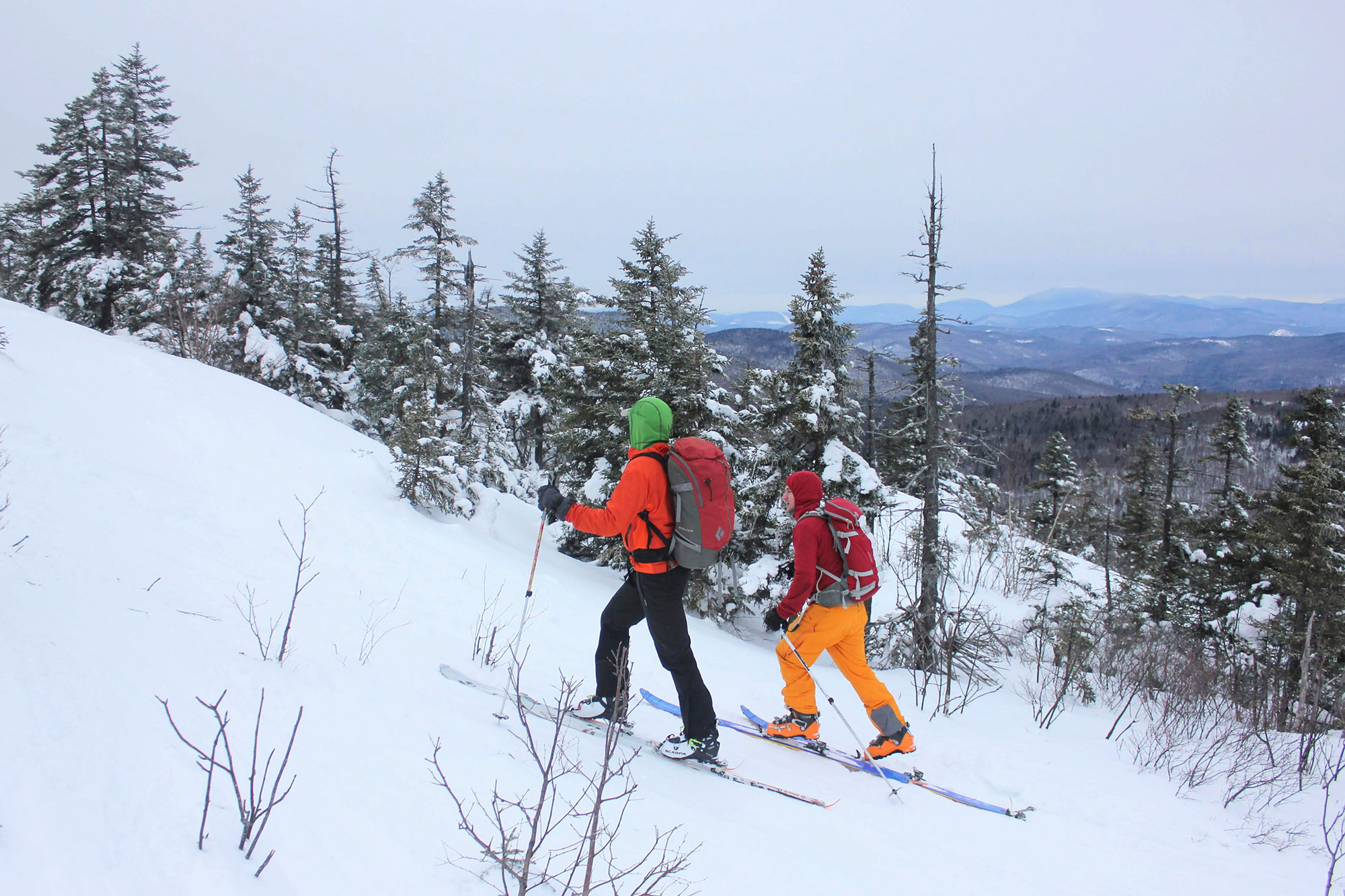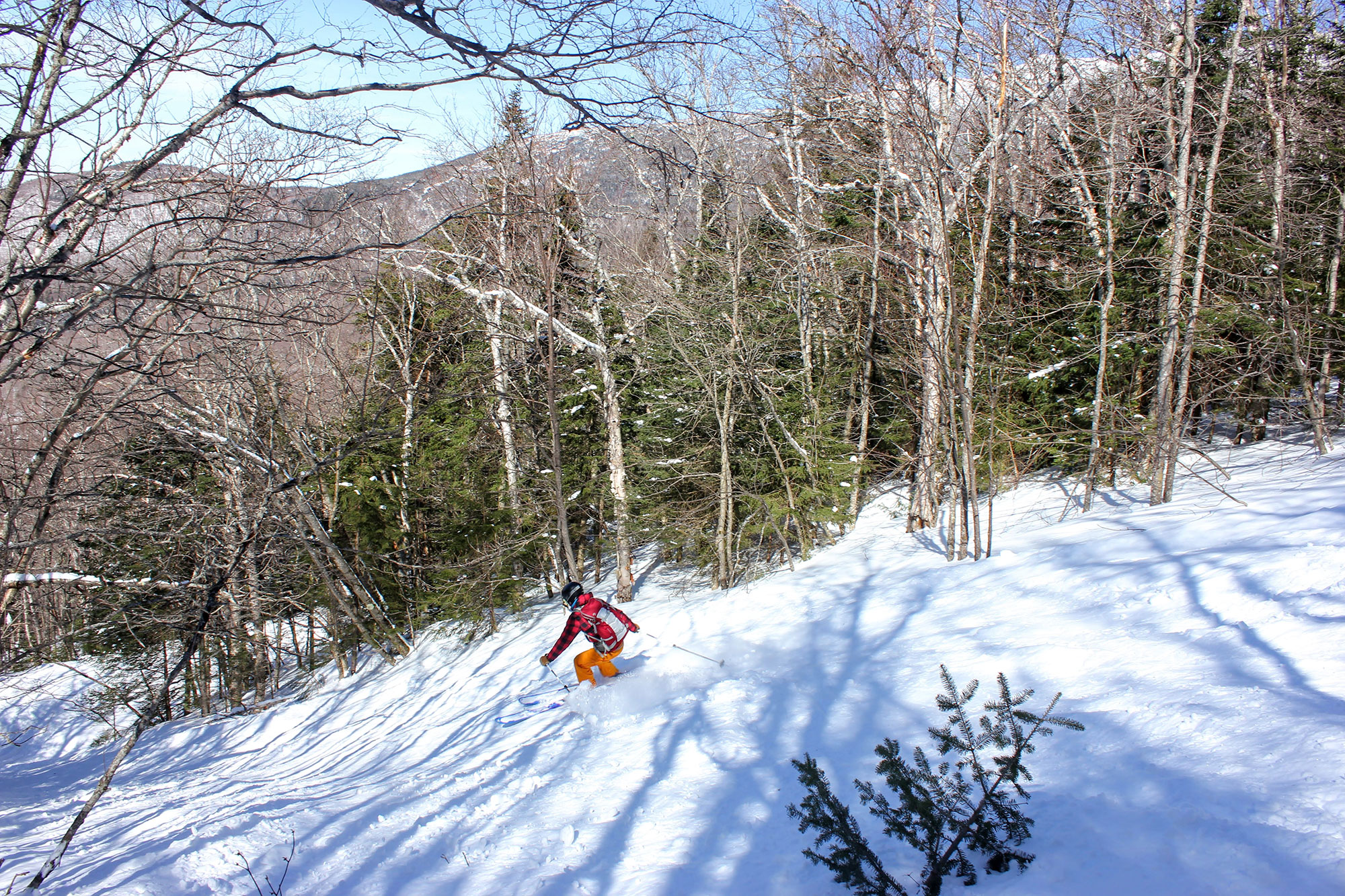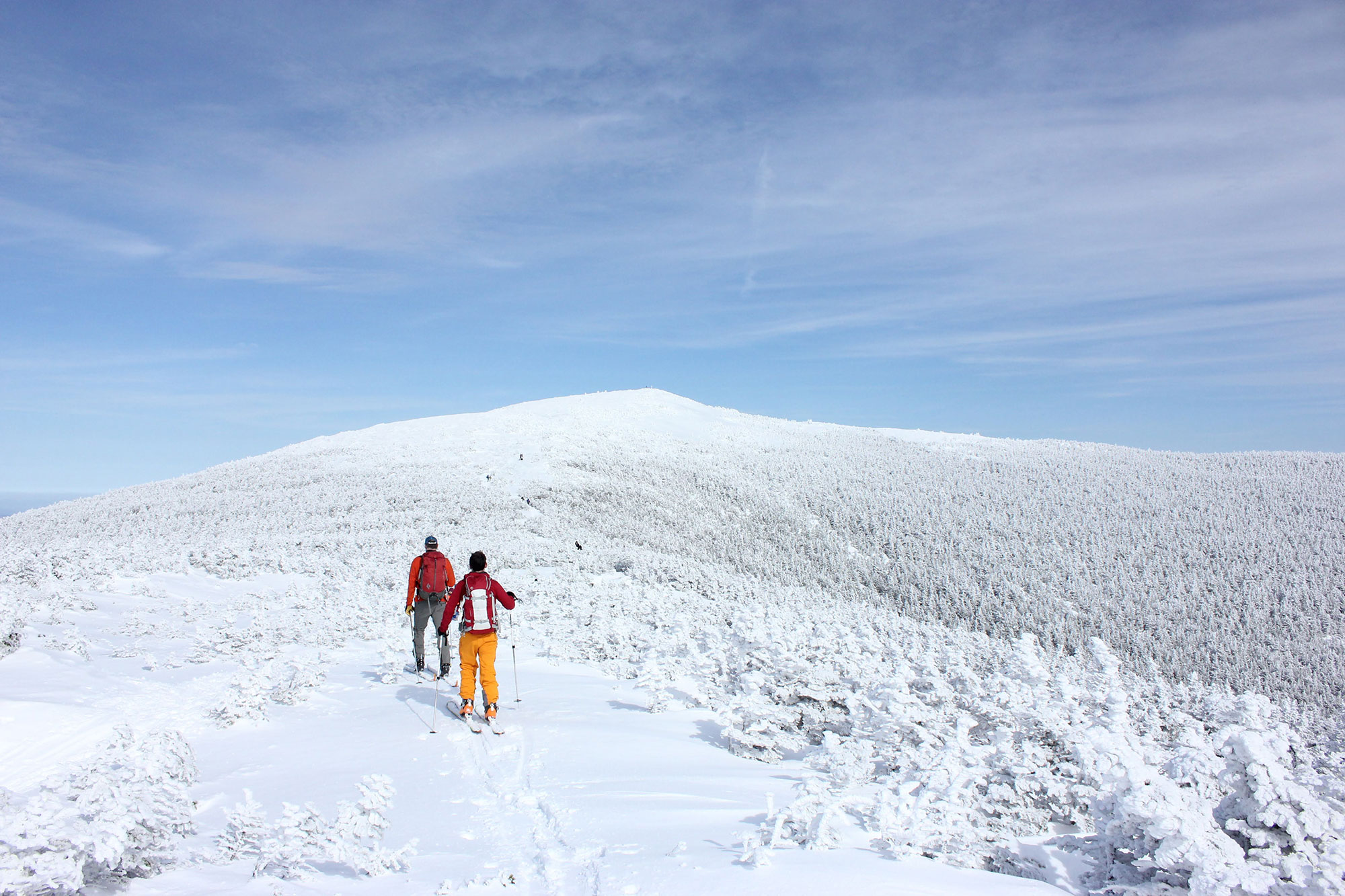It gets cold in the Northeast. Unbearably cold, sometimes. But low temps shouldn’t be an excuse for missing that next backcountry powder day. Read on for 10 tips for staying warm this winter while backcountry skiing.

1. Don’t Dawdle in the Parking Lot
Arrive ready to go—dressed, skins on, and fully packed—so that you can jump right out of the car onto the skin track. Screwing around in the parking lot ensures you’ll start your tour off too cold.
2. Start a Little Cold
Starting overdressed is a certain way to overheat, guaranteeing damp baselayers for the rest of the tour. It also ensures that 10 to 15 minutes into the day, you’ll need to stop and de-layer, starting a cycle of body temperature fluctuations that are difficult to manage.
3. Timely Layering
Everybody knows that layering is key to staying warm in the backcountry. But an underrated aspect of this process is knowing where and when to add or subtract a layer. For example, on the steep climb up a Tuck’s gully, don’t wait until you’re already roasting from the climb to shed that outer layer. Likewise, on something like Mount Moosilauke, which has a lengthy above-tree line segment, pause below treeline to add appropriate gear before venturing into the cold, windy terrain above.
4. Lots of Lightweight Layers
Instead of carrying a few heavy layers, carrying a variety of lightweight layers allow greater adaptability to conditions. For example, carrying two lightweight puffies instead of a single heavy one is a favorite backcountry ski trick, especially if one of those puffies is made with active insulation. On particularly cold days, this allows you to wear a puffy in the skin track or slide it under your shell on the descent, rather than reserving it for transitions.

5. Pack for Success
Pack the layers you’ll use most often near the top of your bag so the whole group doesn’t have to pause while you dig that critical piece out of the bottom of your pack. Likewise, stash essentials like gels, a hat, and a buff in your pockets—this way you can get an energy boost and warm up on the move, without stopping to take off your pack.
6. Plan Group Breaks
Instead of everybody on the tour taking haphazard breaks, get the group on board with regular group breaks—we like to plan hourly breaks or at obvious transitions (up/down or significant terrain changes). This is a great way to improve group efficiency and keep everybody moving and warm.
7. Fuel Up
It’s difficult to stay properly fueled in the winter—you burn more calories, you don’t realize how much you’re perspiring, and you lose fluid through respiration. Dehydration + hunger is a certain recipe for getting cold, so make sure to eat and drink at every break to keep the furnace burning and the stoke high.

8. Some Like it Hot
Water not cutting it or freezing in your bottle? Try a thermos filled with a hot drink—it’s one of our favorite mid-outing pick-me-ups. Store your drink of choice in a Hydro Flask so that it’s hot when you want it. Likewise, a sippable soup in an insulated container is a lot more appealing than a frozen Snickers bar.
9. Do Your Homework
Pick the right tour for the forecast and snowpack, then research your route so you’ll stay on track. (Looking for more ski touring tips? Check out What Guides Think About Before Ski Touring in Tuckerman Ravine.) For example, there’s no need to sit on the couch because it’s freezing in the Presidentials; some great cold-weather options are Mount Cardigan and Granite Backcountry Alliance glades like Maple Villa and Crescent Ridge. They’re all at much lower elevations and minimize wind chills by staying mostly in the trees.
10. Pack a Dry Set of Clothes for the Ride Home
There’s nothing worse than driving home in damp baselayers. Ever so slowly, that dampness sucks out your energy, delaying your recovery for tomorrow’s powder day. Whenever you finish your tour, change into a dry set of clothes right away.
Do you have any tricks for staying warm while ski touring? If so, we want to hear them! Leave them in the comments below, so we can all stay warm this winter.

Tim Peck and Doug Martland
Tim and Doug met long ago at the Eastern Mountain Sports in Canton, Massachusetts. Bonding over a love of slick Quincy Quarry granite, White Mountain sufferfests, and scheming up adventures while folding tee-shirts, today Tim and Doug collaborate to write about their favorite outdoor activities and occasionally get nostalgic about tee-shirt tables.
Related Posts
April 2, 2024
10 Tips for Mountain Biking Etiquette During Mud Season
One rough spring could ruin the…




